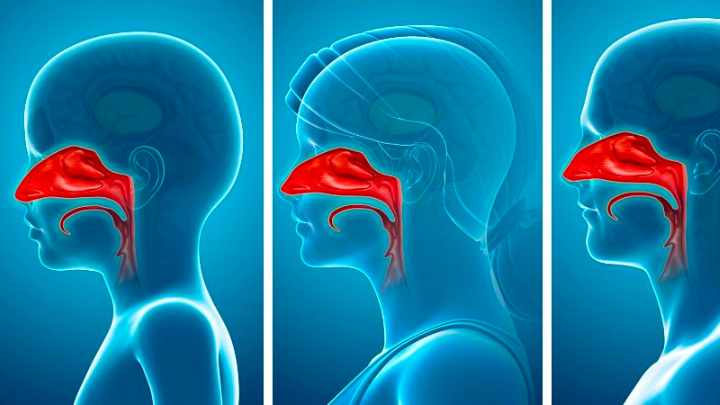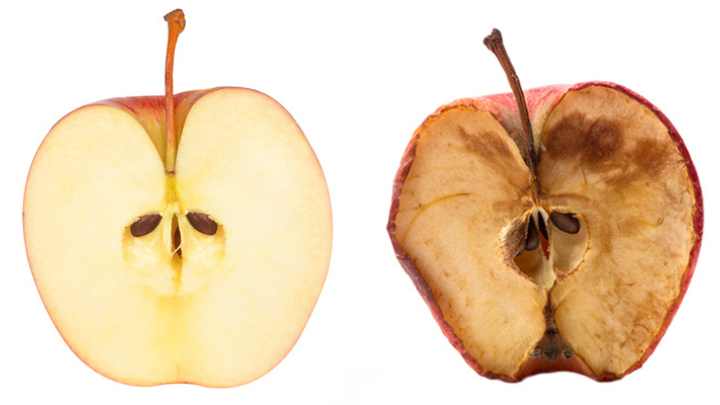Imagine a simple act that you perform every day—breathing. Did you just become aware of your breath? Pause, inhale, then exhale for longer. Do it for 4 times.
Now before we asked you to stop, were you breathing through your nose or your mouth? If you can’t remember, that’s okay. Breathing is so automatic that we often forget about its existence. Yet, breathing is the one thing keeping us alive.

If you’re amongst those who habitually breathe through their mouths, you’re not alone. Mouth breathing, often overlooked, is a prevalent phenomenon with far-reaching implications for health and well-being than you might realise.
In this article at Avea, we delve into the world of mouth breathing, exploring the scientific distinctions between it and nose breathing. Beyond its mechanical differences, mouth breathing can impact oral health, sleep quality, and overall vitality. Learn why you should consider switching this habit.
In this article
Free guide to reverse your biological age

- Master the science of rejuvenation.
- Apply proven tips to turn back the clock.
- Transform your health with top longevity specialists.
Why do we breathe?
We breathe air primarily to obtain the oxygen necessary for our body’s cellular respiration.

Cellular respiration is a metabolic process that occurs within your cells, where oxygen combines with glucose (a type of sugar) to produce energy in the form of adenosine triphosphate (ATP).
The energy produced during respiration is vital for the functioning of all your cells and tissues, allowing you to perform various physiological processes and activities.
As a by-product of cellular respiration, carbon dioxide (CO2) is produced. This CO2 is transported back to the lungs via the bloodstream.
When you exhale, you release carbon dioxide from your body into the environment. When you inhale, you draw oxygen-rich air from the environment into your lungs.
Basically, an exchange of gas occurs in your cells through breathing.
Nose breathing vs. mouth breathing
We all have two breathing patterns: nose breathing vs. mouth breathing, and they both have different impact on our health.
Nose breathing and mouth breathing are distinguished by the pathways through which air enters your respiratory system. When you breathe through your nose, the air follows a carefully choreographed path.

As it enters your nostrils, it encounters a maze of structures, such as the turbinates and nasal hairs, which play a pivotal role in its transformation.
These nasal features filter out impurities, like dust and allergens, before the air continues its journey. Your nose also moistens and warms the air, optimising its condition for your lungs.
On the other hand, mouth breathing offers a direct and unfiltered route for air to enter your body. Air rushes in and out with minimal preparation, bypassing the intricate processes that nasal breathing provides.
The nose’s functions
Your nose is not merely a passageway; it’s a complex organ designed to optimise the air you breathe. Its role extends beyond mere filtration. Your nasal passages are lined with mucous membranes that humidify the incoming air, ensuring that it’s adequately moist before reaching your lungs. This humidity is crucial for maintaining the health of the delicate lung tissue.
Your nose also helps condition the air by regulating its temperature. Inhaling cold air through the mouth can be harsh on the respiratory tract, potentially causing irritation and discomfort. Your nose, however, tempers the air, making it more compatible with your body’s internal environment.
Why is mouth breathing bad for you?
Mouth breathing may seem benign. But from a scientific perspective, it can have a significant impact on your health and well-being. Let’s delve into the reasons why mouth breathing can be detrimental for your health.
1. Impact on oral health:
One of the immediate concerns associated with mouth breathing is its effect on oral health. Breathing through your mouth dries out your oral cavity, reducing saliva production.
Saliva plays a crucial role in maintaining oral hygiene by neutralising acids, remineralising your teeth, and washing away food particles.
With decreased saliva, your mouth becomes a breeding ground for harmful bacteria, potentially leading to chronic bad breath (halitosis) and an increased risk of tooth decay.
2. Dental development and facial structure:
In children, chronic mouth breathing can have lasting effects on dental development and facial structure. Prolonged mouth breathing may lead to malocclusion, a misalignment of the teeth or improper bite.
This misalignment can result in orthodontic issues that often require treatment with braces or other orthodontic devices. It can also influence the growth of facial bones, potentially leading to long-term facial changes.
3. Sleep and heart issues:
Many people, who primarily breathe through their mouths during sleep, experience disruptions such as snoring and sleep apnoea. These sleep-related disorders can lead to poor sleep quality and constant daytime fatigue.
The reduced oxygen levels can lead to a heightened stress response in the body, impacting overall cardiovascular health.
4. Respiratory conditions:
Mouth breathing can exacerbate respiratory conditions such as asthma and allergies. When you breathe through your mouth, the nose’s natural filtration system is bypassed, allowing allergens and irritants to enter the respiratory system more easily.
This can trigger or worsen existing respiratory conditions, leading to more frequent asthma attacks or heightened allergy symptoms. It may also contribute to increased inflammation in the airways, making it harder for those with asthma or allergies to breathe comfortably.
There’s also a higher susceptibility to respiratory infections due to the reduced filtration of airborne pathogens.
5. Reduced oxygen intake:
Perhaps most crucially, mouth breathing results in reduced oxygen intake compared to nose breathing. This can lead to lower oxygen levels in your blood, impacting your overall energy levels and cognitive function.
For children, it may manifest as difficulties in concentration at school. For adults, this could mean that work productivity, or relationships with others might be affected.
There are some symptoms of mouth breathing to watch out for, in case you’re now wondering if you do breathe through your mouth a lot.
Do you breathe through your mouth?
Have you been noticing the following quite a few times?
- Dry mouth
- Bad breath (halitosis)
- Tooth decay
- Gum problems
- Snoring
- Sleep disturbances
- Fatigue
- Difficulty concentrating
- Irritability
- Stuffy nose
- Scratchy throat
Then, you might be breathing through your mouth a lot more than you expected. In a study, 50 patients experiencing nasal airway obstruction and obstructive sleep apnoea were medically treated to address their nasal blockages.
The results revealed that nasal breathing led to improvements in 98% of the patients’ sleep apnoea, 38% experienced relief from snoring, and 78% reported increased daytime energy levels.
How to stop mouth breathing
Transitioning from mouth breathing to the more beneficial practice of nose breathing is a valuable step toward your improved health and well-being.
Here are some practical tips, techniques, and insights to help you make this vital shift.
1. Raise awareness:
The first step is to become conscious of your breathing habits. Regularly check in with yourself to see if you’re breathing through your nose or mouth, especially during activities like reading, working, or sleeping.
2. Practice nasal breathing:
Engage in conscious nose breathing throughout the day. Focus on inhaling and exhaling through your nose during moments of relaxation or during light activities.
Consider using “tongue to palate” technique: Gently rest your tongue against the roof of your mouth, which can help you maintain a closed mouth.
3. Nasal hygiene:
Keep your nasal passages clear and hydrated. Use saline nasal sprays or a humidifier to prevent congestion, which might lead to mouth breathing.
4. Breathing exercises:
Practice breathing exercises designed to strengthen your diaphragm and improve lung capacity. Deep breathing exercises can encourage natural nasal breathing.
Try the “4-7-8” technique: Inhale through your nose for a count of 4, hold for 7, and exhale through your nose for 8 seconds.
5. Correct posture:
Maintain good posture, particularly when sitting or standing. Proper posture can help open up your airways and promote nasal breathing.
6. Lifestyle adjustments:
Evaluate your lifestyle factors. Allergies, smoking, and certain medications can contribute to nasal congestion. Addressing these issues can make it easier to breathe through your nose.
7. Sleep position:
If mouth breathing during sleep is a concern, consider sleeping on your side instead of your back. Using a supportive pillow or mouth taping techniques may help keep your mouth closed during the night.
8. Seek professional guidance:
For persistent or severe mouth breathing issues, consult with a healthcare professional or a dentist who specialises in sleep and breathing disorders. They can assess your condition and provide tailored guidance or interventions.
Orthodontic treatments, such as palatal expanders or braces, may be recommended if you have structural issues affecting your ability to breathe through your nose.
9. Be patient and persistent:
Changing a long-standing habit takes time and dedication. Be patient with yourself and keep practising the techniques mentioned above consistently.
How to stop mouth breathing at night
Stopping mouth breathing at night might require some extra work. Transitioning to nasal breathing during sleep can be a gradual process, but the benefits are certainly worth the effort. Here are some additional tips you could consider:
1. Nasal strips:
Nasal strips are adhesive strips that you place on the outside of your nose. They work by physically opening the nasal passages, making it easier to breathe through your nose. They are particularly helpful for those with temporary congestion or structural issues.
2. Humidifier:
Using a humidifier in your bedroom can add moisture to the air, helping to reduce the likelihood of dry mouth and making nasal breathing more comfortable.
3. Mouth taping:
Mouth taping involves applying a small piece of surgical tape (designed for this purpose) over your lips to keep your mouth closed during sleep. This method encourages nasal breathing by preventing mouth opening.
Usually, if your nose is highly plugged, and you’re struggling to breathe, the tape will automatically come off, even if you’re asleep when that happens.
Yet, it’s not suitable for everyone. So, we strongly advise you to consult with a healthcare professional before trying mouth taping.
4. Nasal dilators:
Nasal dilators are small devices that you insert into your nostrils. They work by physically expanding the nostrils, increasing airflow and making it easier to breathe through the nose.
5. Address allergies and congestion:
If allergies or nasal congestion are contributing to mouth breathing, take steps to manage these issues. Consult with an allergist or healthcare provider for appropriate treatments or remedies.
The science of nose breathing during sleep
Let’s see the science behind the benefits of nose breathing over mouth breathing.
Nitric oxide production:
One of the key scientific aspects of nose breathing during sleep revolves around nitric oxide (NO). This colorless and odorless gas is produced in the paranasal sinuses and is released into the nasal passages when we breathe through our noses.
1. Vasodilation: Nitric oxide acts as a vasodilator, meaning it relaxes and widens blood vessels. When you breathe through the nose, the increased production of nitric oxide promotes the dilation of your blood vessels in the lungs. This, in turn, enhances oxygen uptake in your blood.
2. Oxygenation: Nitric oxide also helps improve the efficiency of oxygen exchange in your lungs. It facilitates the transfer of oxygen from the alveoli (small air sacs in the lungs) into your bloodstream, ensuring that your cells receive an ample supply of oxygen during sleep.
3. Antimicrobial properties: Nitric oxide exhibits antimicrobial properties, helping to protect against airborne pathogens and bacteria. It acts as a natural defence mechanism, reducing the risk of respiratory infections.
Sleep quality enhancement:
1. Deeper sleep: Nasal breathing promotes more efficient oxygenation, ensuring that the body receives the oxygen it needs for optimal function during sleep. This can lead to deeper and more restorative sleep cycles.
2. Reduced sleep disruptions: Nasal breathing reduces your likelihood of snoring and sleep disruptions linked with mouth breathing. This benefits both you and your sleep partner.
3. Improved brain function: Adequate oxygenation during sleep is essential for cognitive function. Nasal breathing supports oxygen supply to your brain, enhancing cognitive performance upon waking.
4. Reduced stress response: Mouth breathing can activate your body’s stress response system, leading to increased stress hormones like cortisol. In contrast, nasal breathing promotes relaxation and lowers stress levels.
5. Better overall health: Consistent nasal breathing during sleep is linked with better cardiovascular health, improved immune function, and a reduced risk of sleep-related disorders such as sleep apnoea.
Eastern wisdom: harnessing the power of nose breathing
In Eastern philosophies and sometimes used as traditional ‘’medicines’’, such as Hinduism and Buddhism, the significance of breathing is highlighted for spiritual and physical well-being. These ancient practices emphasise the power of nose breathing over mouth breathing.
- Hinduism:
In Hinduism, the concept of “Prana” is fundamental. Prana is often translated as “life force” or “vital energy,” and it is believed to flow through the breath. Nasal breathing, specifically through the left nostril (known as “Ida”) and right nostril (known as “Pingala”), plays a vital role in balancing Prana. The alternating dominance of these nostrils is thought to influence various aspects of our mental and physical states.
- Buddhism:
Buddhism also places great importance on mindfulness and awareness of breath. The practice of mindfulness meditation often begins with focusing on your breath, particularly the sensation of your breath passing through the nostrils. This practice not only calms your mind but also heightens awareness of the subtleties of breathing.
The power of nose breathing
Both have cultures and traditions which prioritise nasal breathing for several reasons which have been backed by science:
- Calming and centering: Nasal breathing is seen as inherently calming and centering. It engages the parasympathetic nervous system, promoting relaxation and reducing stress.
- Energy balance: In Hinduism, the alternating dominance of the nostrils is believed to balance energy and influence mental states. Left nostril breathing is associated with a cooling, calming effect, while right nostril breathing is thought to be more energising.
- Mindfulness: In Buddhism, focusing on the sensation of breath entering and leaving the nostrils is a foundational mindfulness practice. This deepens concentration and awareness.
- Health and vitality: Both traditions recognise the health benefits of nasal breathing, from filtering and humidifying the air to promoting better oxygen exchange.
These Eastern philosophies and practices highlight the power of our noses in harnessing the breath’s potential.
They remind us that the simple act of breathing through our noses isn’t just a physiological function; it’s a gateway to improved physical health, mental clarity, and spiritual well-being.
















